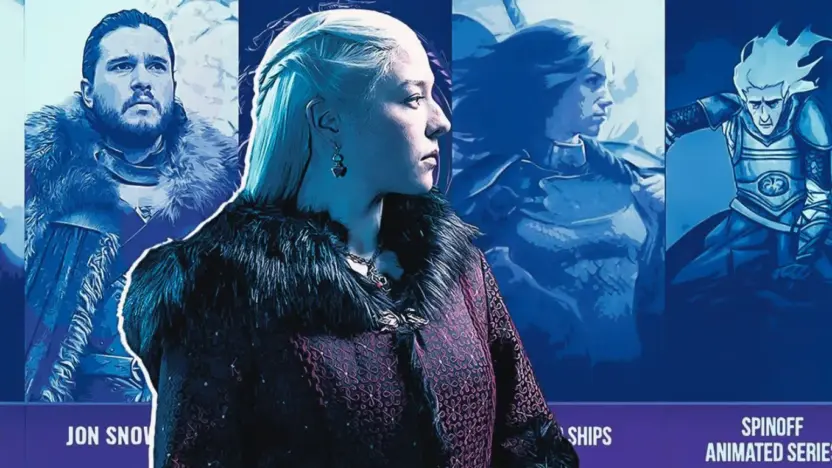Spin-off and Sequel | Meaning | Difference | Comparison: In the dazzling world of film, television, and literature, storytellers often extend their narratives beyond the confines of original works. Two popular methods of accomplishing this are through the creation of sequels and spin-offs. Though these two terms are often used interchangeably in everyday parlance, they bear distinct meanings and evoke different narrative continuities. This article aims to demystify the terminologies – ‘spin-off’ and ‘sequel,’ examining their respective definitions, pointing out their salient differences, and providing an in-depth comparison between the two.
Understanding these concepts can enrich your viewing or reading experience, and enable you to appreciate the intricate complexities involved in carrying a narrative forward. Whether you’re a casual fan seeking clarity, a budding writer delving into story development, or a seasoned critic honing your analytical acumen, our exploration will shed light on these often conflated storytelling devices.
Spin-off and Sequel | Meaning | Difference | Comparison
Defining Spin-offs and Sequels
Sequels are direct continuations of an original work, carrying forward the main storyline and featuring the same primary characters. They often maintain a similar tone and theme as the original, unfolding events subsequent to the initial narrative. On the other hand, spin-offs originate from an existing work but branch off to focus on a secondary character, subplot, or a unique aspect within the same universe. They offer new perspectives, narratives, and potentially different tones and themes, highlighting unexplored areas of the original story. In essence, while both sequels and spin-offs expand an established universe, sequels adhere closely to the main story, and spin-offs venture into diverse narrative territories.
Key Differences between Spin-offs and Sequels
The key differences between spin-offs and sequels primarily revolve around their narrative approach, focus, and continuity.
- Narrative Continuity: Sequels are linear continuations of an original work’s storyline, often picking up where the original left off. Spin-offs, however, branch out from the primary storyline and explore different narrative directions, although within the same universe.
- Character Focus: Sequels generally revolve around the same primary characters as the original work. Spin-offs, on the other hand, pivot to secondary characters, subplots, or aspects from the original, giving them the spotlight.
- Tone and Theme: Sequels often maintain a consistent tone and theme with the original work, due to their continuation of the main story. Spin-offs can diverge significantly in tone and theme, given their freedom to explore new perspectives and narratives.
- Temporal Placement: While sequels typically take place after the events of the original work, spin-offs can occur before, during, or after the timeline of the original narrative.
- Story Scope: Sequels extend the central plot, whereas spin-offs expand the universe of the original story, offering breadth by exploring different characters, settings, or situations.
The Purpose and Benefits of Spin-offs
Here are few purposes and benefits of Spin-offs:
Expanding Universe
Spin-offs enrich the narrative canvas of a story. They delve into the unexplored elements of the original story – the side characters, subplots, and unseen parts of the narrative universe. This exploration leads to deeper world-building and enhanced storytelling depth.
Fresh Perspectives and Artistic Freedom
Spin-offs revitalize a narrative by pivoting from the main storyline and spotlighting alternate characters or scenarios. This offers audiences fresh perspectives and sustains their interest. Moreover, they grant creators artistic freedom to experiment with styles, tones, or genres while staying connected to a familiar universe.
Risk Management and Extended Lifespan
From a business standpoint, spin-offs are a strategic risk. They capitalize on the original work’s fan base, increasing the spin-off’s success chances. Additionally, they extend a franchise or series’ lifespan, keeping the audience engaged even post the original storyline’s conclusion.
Character Development and Audience Engagement
Spin-offs allow comprehensive character development, exploring the backstory or future arc of secondary characters. This enhances the audience’s connection with the narrative universe. By providing new material related to an original work, spin-offs satisfy fans’ craving for more content and facilitate increased audience engagement.
Creative Approaches: Spin-offs vs. Sequels
In storytelling, both spin-offs and sequels serve as unique avenues for creative expansion. Sequels typically continue the existing narrative arc, requiring a deep understanding of the original work’s tone, characters, and plot to maintain authenticity. They offer an opportunity to delve deeper into the characters’ development and world-building, often introducing new elements to keep the narrative fresh.
On the other hand, spin-offs carve out a distinct narrative from the original, focusing on secondary characters, different time periods, or new locations. This allows creators the freedom to experiment with tone, genre, and storytelling style, offering new layers to the existing narrative.
While both spin-offs and sequels necessitate a balance between originality and familiarity, they hold unique challenges and rewards. By understanding these storytelling extensions, creators can breathe continued life into their narratives, offering a wealth of opportunities to expand upon their crafted universe.
Impact on Audience Reception and Expectations
Audience reception and expectations for spin-offs and sequels differ significantly due to their unique storytelling approaches. Sequels, promising continuity and progression, must satisfy audiences’ anticipation for the unfolding narrative and familiar characters. While they often meet expectations by advancing the plot and character arcs, they risk disappointment if perceived to lack originality or deviate undesirably from the original path.
Conversely, spin-offs evoke curiosity and exploration. Fans anticipate a deeper dive into secondary characters or subplots from the original work. Acclaim follows spin-offs that enrich the narrative universe and tell a compelling independent story. However, failure to maintain connection with the original work or to deliver a compelling story may result in disappointment.
Both sequels and spin-offs generate excitement by extending beloved narrative universes, but audience reception depends significantly on striking a balance between innovation and fidelity to the original. Overall, well-executed sequels and spin-offs can prolong a narrative universe’s lifespan, deepen audience engagement, and provide fresh content.
Choosing the Right Path: Spin-off or Sequel
Choosing to develop a sequel or a spin-off is a pivotal decision, greatly impacting the trajectory of a narrative universe. The choice depends on several factors such as the original story’s potential, audience demand, commercial prospects, and the creative aspirations of the storytellers.
If the original story has room for further growth or unresolved plots, a sequel might be apt to continue the narrative. Conversely, if secondary characters or subplots present compelling potential for independent exploration, a spin-off could provide desired narrative expansion. Discerning what the audience wants is key. A sequel would likely satisfy fans eager for the next chapter in the main plot or characters. However, if interest gravitates towards a specific character or narrative universe aspect, a spin-off could cater to this demand.
Both sequels and spin-offs, if well-executed, can be commercially viable. Sequels often draw on an established audience eager for the story’s continuation, while spin-offs can attract both existing fans and new audiences with their distinctive perspectives. Thus, assessing potential return on investment is crucial. The choice also hinges on the creators’ aspirations. If they seek to extend the main storyline, a sequel provides a suitable canvas. On the other hand, a spin-off offers greater creative latitude to experiment with tones, settings, or characters.
In conclusion, choosing between a sequel and a spin-off demands thoughtful consideration of the factors mentioned. Both avenues offer unique opportunities for storytelling, audience engagement, and commercial success. The “right” choice will inevitably depend on the specific context and goals of the creators and stakeholders involved.
Also Read:10 Harry Potter Quotes That Capture The Core Of Each Character



